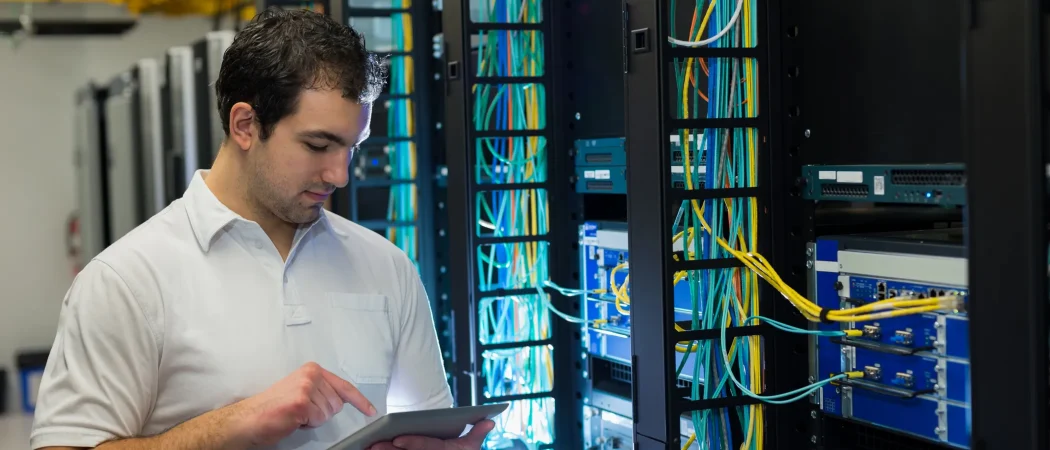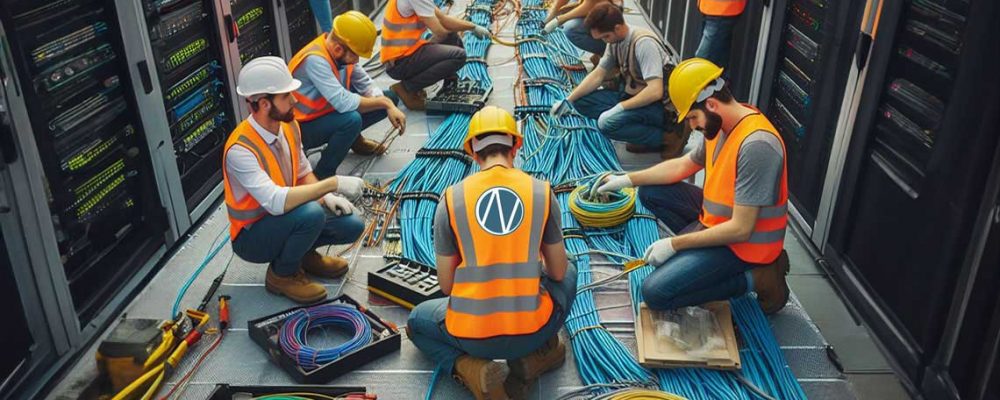Summary: These days, an organization relies on a strong network infrastructure. A qualified cable contractor is required to secure seamless Data and Communication System performance, alongside minimum downtime and security. So knowing the choices in front of one, such as structured cabling or fiber optic, will drive one to make the proper choice and hence provide the required performance and scalability for the organization.

A cable contractor can be a person or organization that installs network cabling and wiring systems while providing design and maintenance services. These contractors work out structured cabling, fiber optics, Ethernet wiring, and low-voltage solutions to keep your business network infrastructure strong, scalable, and efficient. Depending on your office layout, technology needs, and future growth plans, cable contractors can also assist you with the cables to use.
A few advantages come with experienced cable contractors.
Cable contractors provide a variety of services tailored to business needs. Here’s an overview:
Service Type | Description | Typical Use Cases |
Structured Cabling | Organized installation of all network cables to create a unified system. | Office LANs, warehouses, schools, labs. |
Fiber Optic Installation | High-speed optical cables for long-distance data transmission. | Data centers, backbone connections, cloud infrastructure. |
Voice & Data Cabling | Combines phone systems and network cabling for seamless communication. | VoIP systems, office communications. |
Ethernet Wiring | Installation of Cat5e, Cat6, Cat6a, Cat7, or Cat8 cable. | For Institut Server Rooms, High-Speed Internet, and Video Conferencing Applications. |
Low-Voltage Wiring | For Security Cameras, Access Control Systems, and Alarm Systems. | Commercial buildings, labs, and cleanrooms. |
Wireless Network Setup | Installation and configuration of access points and wireless networks. | Offices, warehouses, remote workspaces. |
Selecting an effective commercial building, lab, and cleanroom cabling constitutes the foundation of any business network. It assists in keeping systems neatly arranged, modularized, and easy to maintain.
Several types of cables are available for different business operations. Choosing one depends on speed requirements, distance, and environmental conditions.
Cable Type | Description | Advantages | Best Use |
Shielded Twisted Pair (STP) | Twisted copper wires with shielding to reduce electromagnetic interference. | Reliable in high-EMI environments, consistent data rates. | Industrial sites, electronics-heavy offices. |
Unshielded Twisted Pair (UTP) | Simple twisted copper wires without shielding. | Affordable, flexible, easy to install. | Office networks, schools, small businesses. |
Coaxial Cable | Central conductor with an insulating layer and metallic shielding. | Resistant to interference, longer runs than UTP. | Legacy networks, CCTV, and broadband distribution. |
Single-Mode Fiber (SMF) | Thin glass core using light for data transmission. | High bandwidth over long distances, minimal signal loss. | Telecommunication networks, backbone connections. |
Multi-Mode Fiber (MMF) | Larger core, multiple light paths. | Cost-effective, high bandwidth for short distances. | Campus networks, LANs, and data center interconnects. |

The cost of hiring a cable contractor depends on:
Project Size | Estimated Cost Range | Notes |
Small Office (1-20 devices) | $1,500 – $5,000 | Standard UTP cabling, minor network setup. |
Medium Office (20-100 devices) | $5,000 – $15,000 | Structured cabling, partial fiber, and VoIP integration. |
Large Office / Warehouse | $15,000+ | Full infrastructure design, fiber backbone, wireless deployment. |
Professional cable contractors follow best practices, hence the execution of quality installation processes:

Choosing the right cable contractors is always important when building a strong, scalable, and secure network infrastructure. When an expert team with proper training and all the right tools installs cables, those cables will be installed correctly, according to safety regulations and compliant with your company’s technology requirements today and in the future.
Network Drops offers licensed, insured, and competent services to serve New Jersey, Pennsylvania, and nearby businesses in need of skilled cabling work. Their experienced cabling contractors install structured wiring, fiber optics, Ethernet cabling, low-voltage installations, and wireless networks that will cater to your business requirements. When you trust reliable cable contractors at Network Drops, you get a network built for growth, efficiency, and longevity.
Contact Network Drops today for a free consultation and quote for your network cabling needs.
The cost of cable installation can vary widely based on several factors. These include the type of cabling you choose, the size of the covered area, and any extra work required (like drilling or cable management). For a precise estimate tailored to your needs, it’s best to consult a professional installer who can assess your situation and provide a detailed quote.
While it’s possible to tackle network cabling as a DIY project, hiring a professional is often better. A skilled installer will ensure the cabling is done correctly, adhering to safety standards and optimizing performance. They can also handle any troubleshooting and ensure your network operates smoothly without potential issues.
It’s generally recommended that your network cabling be inspected every 2 to 3 years. Regular inspections help identify issues early on, such as wear and tear or performance problems. Keeping up with these checks can prevent more serious issues and ensure your network remains reliable and efficient.
Look out for signs like slow network speeds, frequent disconnections, or noticeable physical damage to your cables. These issues can indicate that your current cabling is no longer sufficient for your needs. If you’re experiencing these problems, it might be time to consider an upgrade to improve performance and reliability.
"*" indicates required fields
Scott Fcasni is the driving force behind Shock I.T. Support’s commercial datacomm cabling division, delivering expert solutions that power reliable, high-performance network infrastructures. With extensive experience in structured cabling and a commitment to precision, Scott ensures that every project—whether for small businesses or large enterprises—meets the highest standards of quality and scalability.